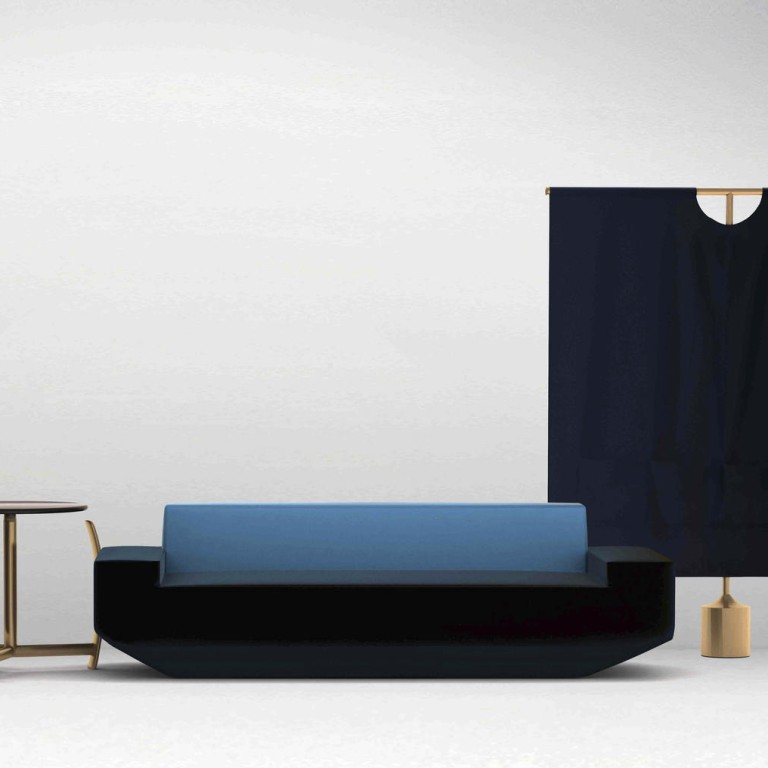
Designers from Shenzhen to Beijing make a splash in London
Chinese design has moved on from traditional elements to embrace abstract concepts and functionality, and London Design Festival showcased designers familiar with international tastes but confident in their own roots
National showcases for design are often hit and miss. Institutional support or money, however well-meaning, can stifle creativity and result in objects that are beautiful or well presented but not always memorable. That was, thankfully, not the case with Hi Design Shanghai's first British celebration of Chinese design at this year's 100% Design (as part of the annual London Design Festival, which ended on Sunday).
A collaboration between London-based design magazine and a panoply of Chinese and British business and design organisations, it was a focused and mostly well-edited display of work that runs the gamut from playful lighting to modern sofas, from traditional lacquer work to geometric furniture.
The smallest offerings were sometimes the most tantalising. A range of desk-top accessories by Jerry Huang of Shenzhen-based EY-products was made out of a blend of ebony bark (discarded by a factory making ebony furniture) and resin. Aptly entitled Landscape Series, the resulting containers, pencil pots, rulers, paperweights and business card holders were functional but also poetic with layers of gold and brown and internal flourishes created by the resin as it had filled the gaps left by the bark. Another item by EY-products was a simple wooden square lamp with a carved moon. "My designs are about recreating specific moments," says Huang. "This one was inspired by a night-time walk and the sight of a beautiful moon."
Huang's Moon Lamp represents a recent trend or shift in Chinese design says Zheng Qu, the director of London's China Design Centre (co-organisers of the show), an exhibition space and centre founded in the summer of last year to provide a bridge between British designers and Chinese manufacturers and to familiarise British audiences with emerging Chinese design.
"Designers from China are starting to understand that they have to tell a story with their work, it can't just be about the product or brand," he says. "Telling a story is more important."
Beijing-based furniture brand Maxmarko showed two pieces, a glass side table with a sculptural base called Butterfly and a floor lamp called Ray, that are cases in point. Lead designer Darui Chen says the table base references a butterfly's wings in motion (as well as that much-loved children's string game called Cat's Cradle) but that it has also been designed for maximum structural resilience.
"It can be replicated and made taller for a dining table version," he says. His Ray lamp is a deconstructed reinterpretation of a typical geometric and intricate Chinese lamp from the Ming dynasty and is made of copper and walnut wood. Surrounded by a glass shade and placed in an abstract and architectural metal frame structure, he says "inside it references history, outside it has a contemporary form".
The base of Chen's table is reminiscent of a Chinese tea table carved out of tree roots says Qu, but is more sophisticated and sculptural.
"The emphasis in Chinese design used to be on strong traditional elements," he says. "Now it's more about abstract concepts and functionality." The latter can come in various forms, however.
Young Berlin-based Chinese design duo Yuue have created lamps that affect people's behaviour as well as perform a function. Their Balance lamp turns on only when a smartphone is placed in a slit at one end.
"That way people can get on with work and other things without always being distracted," says one half of the duo, Xinyu Weng. Their other light, the curvaceous and tubular Angry floor lamp, is still a prototype but is based on a promising premise: when there is too much (day)light it turns itself off with an angry and theatrical snap of its on-off cord, reminding users that keeping lights on is wasteful.
Other highlights at the Design Shanghai showcase included young design company WUU's collection of knives and scissors (from heavy fabric scissors to dainty eyebrow trimmers) made in collaboration with a fifth-generation scissor-maker from Fuzhou, and their highly architectural concrete-and-brass desktop accessories. The pieces were sculptural but always practical.
Elsewhere, craftsman Tao Song used a traditional lacquering technique (in which the resin is applied 50 times) for his circular tables but gave them a modern nesting typology and aesthetic, while Beijing-based Frank Chou showed his Oriental Series; a sleek and geometric armchair and sofa and an intriguing new side table with a burnt wood top and brass-finished aluminium legs that subverted the traditional barrel shape by removing chunks on the sides.
"I don't want to design only for the East or West," says Chou of his East-meets-West stool. "I want to design for both."
If this show at 100% Design is anything to go by, a new wave of Chinese designers familiar with international design tastes but confident in their own roots seems to be emerging. And the results are exciting.

